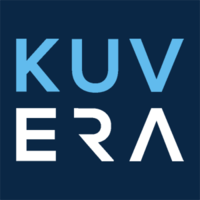
Kuvera
View Brand PublisherKuvera Insights 2020: A deep dive into personal finance in India
In the last few years, wealth management has undergone a digital transformation, with the advent of tech-led personalised financial planning platforms. , founded in 2016 by Gaurav Rastogi, Neelabh Sanyal and Mayank Sharma, is one such robo advisory platform for personal financial planning and investing that wants consumers to be their own wealth managers.
Starting out as a mutual fund platform, it has evolved into a personal finance solution company. It has now become one of India’s first commission-free investing platforms for individuals, competing against the likes of , , ETMoney and several others.
Kuvera uses technology to steer users towards taking action based on their specific financial goals. Customers can enter their personal details, set up financial goals such as tax-saving to house-buying, for retirement or children’s education, among others. The platform uses artificial intelligence algorithms to assess the customer’s profiles and risk appetite, and recommend suitable financial products based on their goals.
Alokik Advani, Managing Partner, Fidelity International Strategic Venture says, “The personal wealth management space in India has exploded over the last 12-18 months with several platforms and apps gaining traction to serve the mass and mass-affluent communities. Digital wealth platforms led by Kuvera, robo advisors and neo banks are converging in terms of functionality and capabilities. The holy grail here is a multi-product capability, with the aggregation of your whole financial picture followed by holistic advice which is affordable.”
Through the COVID-19 pandemic, wealth management saw plenty of upheavals. Those hit hardest withdrew funds from the markets and stopped SIPs. However, in a qualitative survey, about 30 percent of users who had stopped SIPs mentioned that it was only a temporary pause and they will restart the SIP soon, a Kuvera representative said.
According to their recently released report State of personal finance in India, while banks had a tough time, the pharma sector bounced back after a three-year lag. The best-performing mutual funds were in the healthcare sector, with DSP Healthcare and Mirae Asset Healthcare on top. On the other hand, 2020 was not a good year for credit risk funds, with BOI AXA Credit Risk and UTI Credit Risk being the worst-performing mutual funds.
The top two performing Indian stocks were Adani Green Energy and Laurus Labs, while the worst-performing were YES Bank and Punjab National Bank. The fiscal stimulus helped most risk assets make all-time highs in 2020 with Bitcoin at 313 percent and Nasdaq 100 at 51 percent, followed by Gold, S&P 500 and NIFTY.
The report also notes that in 2020, the most watchlisted Indian stocks were Reliance Industries and Adani Green Energy; in the US, it was Apple and Tesla. The most bought mutual fund schemes on Kuvera were Parag Parikh LTE and Axis Bluechip, while the most sold were L&T Emerging Business and ABSL Frontline Equity.
Home-based investing trends led the way
A key trend that Kuvera observed in 2020 was that a large number of financial decisions were based on home and family. For example, 24 percent of Kuvera users want to save to buy a home, while 21 percent set aside funds for retirement, followed by saving for a car, education, and marriage.
Also, the number of women investors on the platform also saw a spike post-COVID-19. From 17 percent in 2005 to approximately 27 percent today, more women are looking for alternatives to the decreasing fixed deposit rates in banks. Interestingly, many of these women are homemakers, and are first-time investors.
Taking a step towards portfolio diversification, last year, Kuvera announced the addition of ‘Digital Gold’ and ‘Digital Gold SIP’ as part of its offerings. Through Digital Gold, Kuvera helps users bridge the gap between owning gold and safekeeping physical gold, while ensuring quick liquidity, transparency and ease of transactions.
What 2021 holds for wealth management
Kuvera witnessed healthy growth during COVID-19 with more users from younger age groups beginning to seriously look at better managing their personal finances .
Based on these trends, 2021 looks promising for wealth management. In the post-pandemic world, people are increasingly experimenting with investments and transaction apps. This is made seamless with new-age financial apps that allow you to invest in a host of mutual funds after just a few onboarding steps.
Some of the learnings from last year was to never dip into an emergency fund in the bull market, as jobs are cut in bear markets. Also, market timing is hard - when you have excess cash, buy and when you need the money, sell - in between, follow goal-based asset allocation.
Gaurav Rastogi, Founder and CEO, Kuvera says, “Instincts push investors to book profit or to panic when markets go either ways and yet, sanity is in staying invested, remaining focused on one’s goals and waiting it out. Re-calibrating a portfolio from time to time may help gain momentum but there is no substitute to staying goal-based in investing.”
Download a detailed version of the report here








